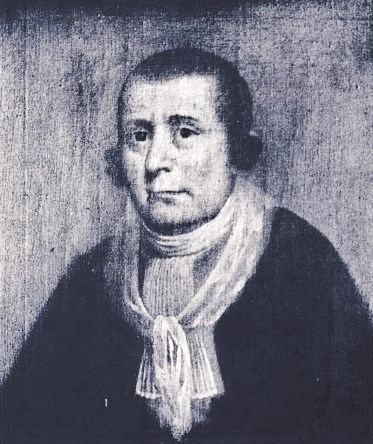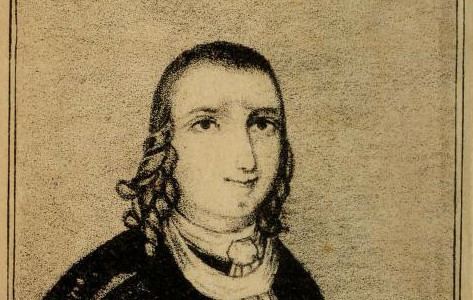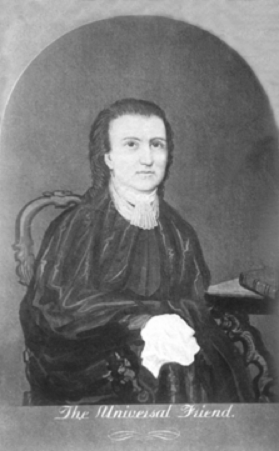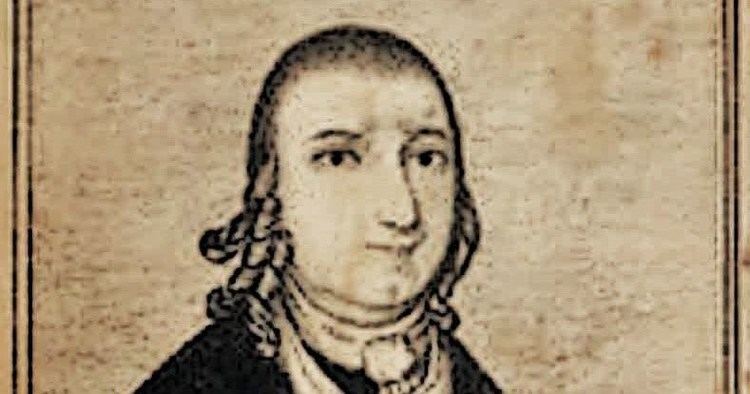Name Jemima Wilkinson | ||
 | ||
Died July 1, 1819, Jerusalem, New York, United States | ||
Organizations founded Universal Friends Society | ||
Jemima wilkinson the first walk in in america
Jemima Wilkinson (29 November 1752 - July 1, 1819) was a charismatic American Quaker and evangelist. Based in Rhode Island, following a severe illness, she claimed a role as a religious prophet. She preached the Ten Commandments and total sexual abstinence to followers forming what she called the "Society of Universal Friends." Wilkinson had grown up in a Quaker family; their religion was historically called the Society of Friends.
Contents
- Jemima wilkinson the first walk in in america
- Early life and resurrection
- Preaching 1777 1790
- Legacy
- References

Wilkinson preached and traveled in New England, where she was generally rejected by traditional Quakers. She settled for a time in Philadelphia, Pennsylvania, the temporary national capital and a city with a sizable Quaker community. There she attracted followers. In 1790 she and followers moved to western New York, to settle on land newly purchased from the dispossessed Seneca people. Most of the Seneca and other Iroquois peoples had been forced out of the state, having been allies of the British during the American Revolutionary War. Wilkinson and her followers founded Jerusalem, New York, since renamed as Penn Yan. It is located in Yates County at the north end of Keuka Lake in the Finger Lakes region.

Early life and "resurrection"

Born in 1752 in Cumberland, Rhode Island as Jemima Wilkinson, the Friend was the child of Amy (née Whipple) and Jeremiah Wilkinson. Their father was a cousin of the politician Stephen Hopkins. The family attended traditional worship with other Quakers at the Smithfield Meeting House. As a young person in the mid-1770s, Wilkinson also attended meetings with New Light Baptists, who were part of the Great Awakening, a religious revival ultimately reaching from New England into the South.

In 1776, a minor epidemic of typhoid spread throughout Rhode Island, and Wilkinson contracted the disease. They suffered a highly fevered state, leaving them bedridden and near death.

Upon recovering, Wilkinson claimed to have been sent by God to preach his message. They believed that Christ had entered their body during their illness and that they were now neither female nor male. This is why this article refers to Wilkinson with They/Them pronouns. Wilkinson claimed to be "a holy vessel of Jesus Christ and God and the Holy Spirit". They called themself the "Publick Universal Friend" and never again responded to the name Jemima.
Preaching 1777-1790

The year "the Friend" began to speak publicly, Wilkinson was rejected by their Quaker brethren. Accompanied by several siblings, they began to travel and preach to other residents of Rhode Island, Pennsylvania, and Connecticut. During the 1780s, Wilkinson lived in Worcester, Massachusetts. They rode a white horse to Philadelphia, Pennsylvania to preach, where there was a substantial Quaker community. The Friend attracted large audiences, including some who joined what Wilkinson called a congregation of "Universal Friends". The Universal Friends were accused of plagiarizing documents which had been written by members of the historic Society of Friends. Wilkinson's personal "seal" appears to have been adapted from that of the Quakers. Several Philadelphia newspapers condemned, exposed, and discredited Wilkinson's preaching. As a trans person in the 1770s, The Friend became a target for libel and slander. Wilkinson's brother's grandson, Jeptha Wilkinson, later invented the modern press wheel.
"Friend" Wilkinson preached a regimen of strict sexual abstinence, and friendship with everyone. They implored all to accept the Fatherhood of God. Wilkinson and their followers received many visitors, taking them in to show hospitality. Visitors were sometimes allowed to stay indefinitely, unless they took action against the Friends' teaching. Michael Bronski writes that by the "mid-1780s the popular press and pamphlet culture covered Wilkinson's sermons in detail and placed particular emphasis on their sexually ambiguous persona. Wilkinson had a huge following that verged on a cult and eventually started a religious settlement in central New York State."
Wilkinson and followers bought former Seneca lands from Robert Morris, a major financier in Philadelphia. He had purchased territory west of the Genesee River in New York State. In March 1790, they began a "group exodus" from Philadelphia, traveling upstream along the Susquehanna River through present-day Wilkes Barre, Pennsylvania and Elmira, New York. On 13 April 1790, The Friend and htheir followers finally reached the north end of Keuka Lake. They named their new township Jerusalem. Later it was renamed as Penn Yan.
The Friend and their followers were the first white people to settle on this land. Wilkinson claimed to have been called "Chief" by members of the Seneca tribe.
Legacy
The Jemima Wilkinson House stands in Penn Yan, and it is included on the National Register of Historic Places, along with other Historic Places in Yates County. It is believed to be located on the same branch of Keuka Lake as the birthplace of the Seneca chief Red Jacket, but his birthplace is disputed.
Wilkinson's followers were European-American pioneers of the area between Seneca and Keuka lakes. They erected a grain mill at what developed as present-day Dresden, New York.
